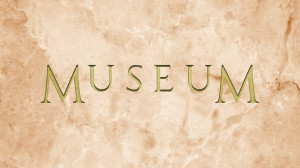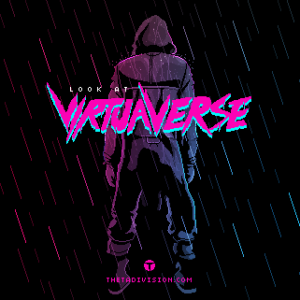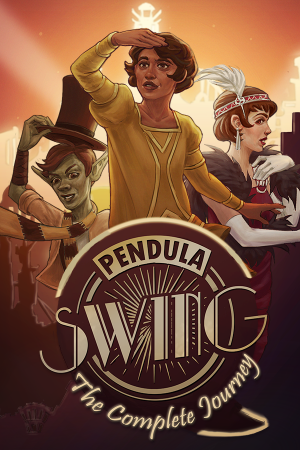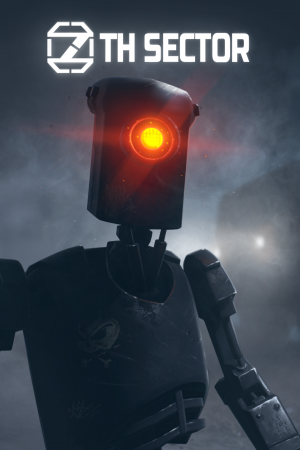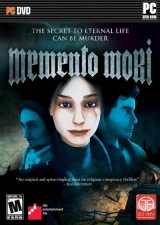Review for Museum: Volumes I and II

Museums are a natural fit for adventure games: From Robert Langdon sleuthing through the Louvre in The Da Vinci Code to George Stobbart‘s inquiries at the Crune in The Shadow of the Templars, museums are not only a genre staple, they’re almost a guaranteed good time. It’s unfortunate, then, that Wreck Tangle’s Museum: Volumes I and II fail to capitalize on their setting in any meaningful way. There are some thrills and chills to be had when you least expect it, and brainpower is needed from time to time in order to make your way through their puzzles, but the few glimmers of inspiration can’t mask the fact that Museum is too underdeveloped to capitalize on its premise.
Players assume the role of a security guard named Todd, working the night shift at the Royal Foyer Museum. Todd’s lazy night of napping in front of static CCTV feeds is suddenly interrupted when all of the monitors cut out. Todd casually ventures out into the museum proper to go investigate, unaware of the adventure lying in wait.
In the first volume of Museum, this is all the background you get. This game is a series of escape rooms just for the sake of…well, escaping. Though Todd does make a smart quip occasionally, there is almost no reaction to the strange happenings you experience throughout your quest to re-establish the camera feeds.
In the second volume, story suddenly becomes much more prevalent, though this increased narrative focus does little to bolster one’s enjoyment. This game explores Todd’s past, and specifically why he took the security job at the Royal Foyer. We learn a family tragedy plagues Todd with guilt, and that he uses the night shift as an excuse to distance himself from dealing with the trauma. The museum begins to morph, reflecting Todd’s inner struggle and manifesting imagery of the incident into its challenges. Unfortunately, Todd’s struggle is developed by only a handful of spoken lines in the extremely short (around 40 minutes) playtime – not nearly enough to really feel invested. And when contrasted against the more whimsical tone of the first installment, the sequel’s dramatic reveal feels shoehorned in, too little, too late.
The first thing you will notice upon leaving the security control room is the museum’s architecture – if you want to call it that. The main hall of the Royal Foyer is a gigantic, sparsely decorated aircraft hangar-sized box. A huge Athena-like statute stands in the center of the room, with several glass displays of artefacts around it. A short staircase ascends to an empty second floor, and a tunnel (also empty) loops in behind the staircase. Museum is an independent production, and to compare its graphical prowess to games with bigger teams and higher budgets would be unfair. However, the complete lack of attention to detail in constructing the museum – little more than a large room with a short staircase to nowhere – is disappointing.
The modelling too is inconsistent, with certain artefacts and surfaces benefitting from detailed texturing while others look like placeholder content lazily strewn about the halls. It hardly looks like a museum, nor even like a video game version of one. So much could have been done with this main hub area. Paintings and sculptures could have filled the hall as you progressed. Puzzles, clues, or Easter eggs could have been hidden throughout, encouraging exploration through a quiet, dark, creepy museum, instead of simply funnelling players through a linear series of exhibits. Whether made up of a series of labyrinthine wings or a series of full room installation pieces, the joy of going into a museum is getting lost in the collection and being guided through a historical and cultural narrative via relics of the era. By comparison, the Royal Foyer's hall has almost nothing to look at, and the few pieces it does contain are all unceremoniously lumped together in the centre of the room.
Each wing is introduced by giant neon lettering that looks more akin to back alley nightclub signage (with basic names like “Aztec” and “Rome”) than they do a history museum display. The hallways branching off the main hall to each exhibit are long, adorned with paintings that sometimes reflect the settings advertised, and sometimes not. In Volume I, you travel to Greek, Aztec, Egyptian, and Roman-themed exhibits, while Volume II takes Todd to a beach, a medieval village, a church, and Victorian London. Each exhibit is set up like a sound stage, with a tall skybox and stage lighting illuminating the set. The décor adorning each exhibit is actually quite good, proving much more atmospheric and detailed than the main hall.
Exhibits vary in terms of immersion, though almost all are at least pleasant to look at. The Greek display features a walkable set of ruins drenched in a hue of amber sunset, with blue Mediterranean water filling the exhibit partway through your investigation. The Aztec tomb’s flickering torch light and glowing florescent symbols make for a moody and creepy tour. Volume II’s Victorian segment is gorgeous, with vacant streets just barely illuminated by gas lamps. Other exhibits, like Egypt and the beach, are less inspiring, looking like a set of base assets sewn together. There are even some back-facing polygons in the medieval village, which clearly remind you, in case you’d forgotten, that you are indeed playing a video game. Wreck Tangle clearly knows how to get the most out of the Unity engine, but their efforts are not evenly spread out across the whole of the game’s environments.
Most exhibits, at least in the first volume, begin with an audio tour recording, offering hints as to what sort of challenge lies in wait. The voice actress for these segments does a fantastic job, and the tour bits are well-written, smartly setting up expectations for the puzzle to follow. Todd’s voice acting is less praiseworthy, though he keeps his mouth shut for most of the first volume anyway. The second volume, however, spurs considerably more commentary from him, and it’s rarely insightful or entertaining. Soft tunes of more or less fitting orchestral music swell out from speakers in the background of each exhibit, adding a nice layer to the immersion.
Museum takes place entirely in first-person, using the standard WASD control scheme. Holding shift allows Todd to sprint, and left-clicking the mouse interacts with highlighted points of interest in the environment. There is no inventory or on-screen display to speak of. The reticle in the centre of the screen is all you’ll ever have to deal with, and all puzzles consist of direct environmental interaction rather than manual item collection and combination.
Another opportunity missed is that Museum is hardly an educational experience. It is not a game for history buffs looking to examine finely reproduced artefacts or landscapes of ancient civilizations. It’s a series of theme park challenges, with humor (or attempts at such) taking precedence over authenticity. Todd even makes comments on the rampant historical inaccuracies during the Roman exhibit, hinting that the developer knew full well what they were doing with the bizarre museum they’ve constructed.
The museum’s eight exhibits (four in each volume) must be completed in a specific order. In the first game, successfully completing an exhibit will unlock a security box with a power switch for the camera, as well as provide a key for the next exhibit. It’s silly, not to mention a completely impractical security procedure, but it does help in signalling when an exhibit has been completed, allowing you to return to the main hall and enter the next. In the second volume, these boxes play no role in progression, and Todd simply walks from one exhibit to the next across the main hall, with the doors automatically unlocking upon completion of an exhibit. You cannot leave a wing until you complete its challenge, nor can you go back and revisit any locations aside from the main hall and control room.
Most challenges boil down to pressing buttons/switches/items in a specific order, sometimes within a time limit. The first volume’s puzzles are varied in their makeup, and are more enjoyable as a result. Though some tasks, like the first part of the Egyptian exhibit, are entirely devoid of creativity (literally consisting of pressing five colored buttons as telegraphed by a nearby pyramid), others are more invigorating, like a number-coded puzzle involving columns in Greece and an Indiana Jones and the Last Crusade-type tile walking puzzle in the Aztec temple.
The second volume’s puzzles are considerably less varied and less challenging. Most involve scavenger hunts or color-coded passwords. A trial and error portal challenge, first used in Rome, is repeated in the church, and it’s just as out of place and dull the second time around. Due to the sequel’s focus on narrative, with the puzzles revolving around bits of Todd’s trauma, all activities flow around a similar theme instead of being inspired by the history or setting of the exhibits themselves. It’s a shame, as it feels like the settings in Volume II are completely wasted as a result, being nothing more than backdrops for poorly developed plot reveals.
Some puzzles can be failed, but the game is liberal with checkpoints just before each challenge, so death will only set you back a minute or two at most. Manual save points are posted in each exhibit as well, allowing you to quit without having to worry about losing too much progress. The aforementioned Egyptian puzzle, for example, asks you to press all buttons in the required order before a sandstorm becomes too thick. Similarly, stepping on the wrong stone tile in the Aztec temple will send you plummeting into a dark pit, forcing a restart back at the beginning of the walkway.
The punishment for failure lies not so much in a loss of progress, but rather in the omnipresent threat of a supernatural event. Unbeknownst to me when starting Museum, jump scares are sprinkled throughout. While this isn’t really a horror game per se, the most effective type of jump scare is the type you don’t see coming, and I did not see Museum’s first one coming. I progressed through the rest of the game with hunched shoulders and a white-knuckle grip on my mouse as a result, always looking out for potential frights, though they seldom appeared. The first volume’s scares are a bit out of place contextually, merely serving to liven the mood, while Volume II’s shock events revolve more around imagery of the memories that haunt Todd.
One of the few performance hiccups I encountered occurred when travelling between the main hall and exhibits as the game paused to load a new area. To reach the exhibits from the main hall, you first traverse a lengthy hallway. Here the game abruptly pauses as you walk, with the hallway’s texturing and composition reloading and changing partway through. Elsewhere, triggers for the audio tour sometimes wouldn’t play after reloading a checkpoint, and I found myself occasionally getting stuck on the architecture while walking, but overall the game ran without any major technical issues.
Having actually worked the night shift in a museum, I can honestly say it's doubly disappointing when a video game adaption of your job is somehow less entertaining than the job itself. And yet even with its artistic shortcomings, linear design, underutilized settings, and same-ish puzzles, Museum isn’t entirely devoid of fun. The looming threat of scares, cheap as they may be, adds a nice bit of urgency to the experience. There are even some hidden bits for achievement hunters, though with the core puzzles devoid of any alternate routes or solutions, doing a second playthrough isn’t very enticing.
With a more thoughtful embrace of the settings and a better distribution of narrative elements across the two volumes, Museum could have been really charming. The Royal Foyer could have been a great place to get lost in, exploring its strange goings-on a la Night at the Museum, but instead we get a loosely connected series of uninspired puzzles without much relevant context. There are worse ways to spend a few bucks (the first volume can be purchased alone, with the second available only as DLC) and a couple hours of your life, but that’s about the strongest recommendation I can offer. Those looking for a quick adventure snack may want to check them out, but on the whole these games are most disappointing not because they’re terrible, but because their potential is so largely unrealized.


